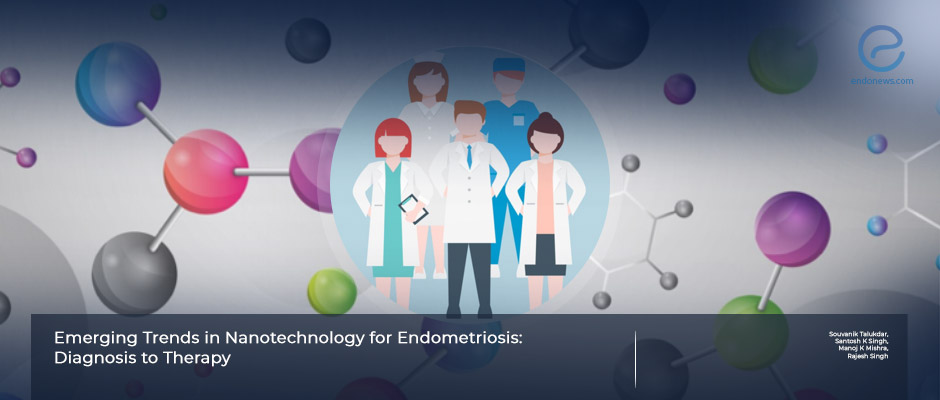Nanotechnology for endometriosis
Aug 19, 2024
It is time for benefiting from nanotechnology in endometriosis patients
Key Points
Highlights :
-
Recent studies indicate that nanoparticles have the potential to enhance medical procedures such as chemotherapy, magnetic resonance imaging, and diagnostic and therapeutic applications, including photoacoustic imaging and disease detection and treatment.
Importance:
-
As a chronic condition, endometriosis stands to benefit significantly from nanotechnology, which has the potential to revolutionize traditional treatment approaches.
What's done here :
- The authors reviewed recent reports and advancements in nanomedicine related to endometriosis to provide an overview of how these technologies could improve the treatment and diagnosis of the condition.
Main key feature :
- Scientific studies show that nanoparticle platforms effective in treating cancer also work well in rodent models of endometriosis. This suggests they could be useful for diagnosing and treating endometriosis.
Limitation of nanoparticle research in endometriosis :
-
The unclear causes and mechanisms of endometriosis present challenges that require thorough research into how nanoparticles might be used to understand and treat this condition.
Lay Summary
Dr.Talukdar from Morehouse School of Medicine, Atlanta, GA, and colleagues have published a timely review of nanoparticle applications in endometriosis. This review appeared in the June 2024 issue of the journal “Nanomaterials”.
Endometriosis patients face a poor prognosis, with unrevealed symptoms and surgical procedures might have potential complications. In this context in light of the published reports and advancements, nanomedicine applications in endometriosis could provide potential beneficial applications.
The authors have reviewed published reports and advancements in nanomedicine applications in endometriosis finalizing a precis of how these systems could enhance treatment and diagnosis of disease.
Published papers show that nanoparticle platforms validated in cancer studies yield similar biodistribution profiles and efficacy in rodent models of endometriosis.
However, endometriosis’s unresolved pathophysiology necessitates wide investigations into the mechanisms of nanoparticle accumulations in ectopic foci. Resolving these mechanisms is important to put forward effective nanoparticles targeted to the specific features of the disease.
The authors emphasize that, despite significant beneficial effects in animal models, clinical applications of nanotechnology for endometriosis lack optimal research and financial support.
Research Source: https://pubmed.ncbi.nlm.nih.gov/38869601/
Endometriosis nanotechnology animal studies

